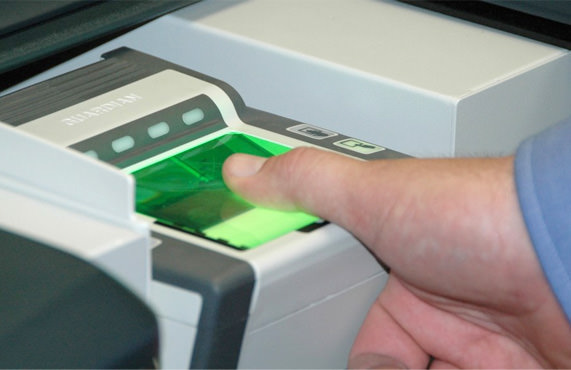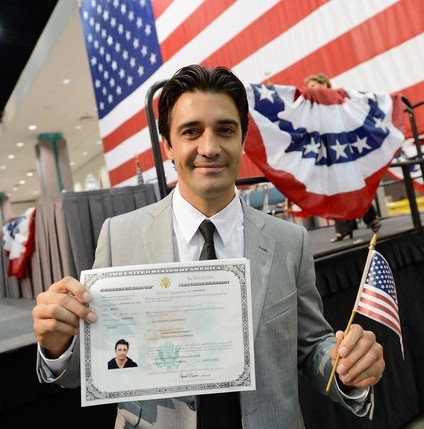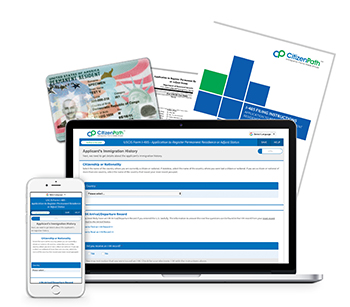Form I-751 Processing Time
What Happens After Filing Form I-751, Petition to Remove Conditions on ResidenceSteps in the USCIS Process
I-751 Processing Statistics
1. Receipt of Petition
Approximately 4 to 6 Weeks After Filing
If you are a condition resident, you'll file Form I-751, Petition to Remove Conditions on Residence, in the 90-day period before your card expires. If properly filed, U.S. Citizenship and Immigration Services (USCIS) will initially respond by mailing you a receipt notice that confirms receipt of your petition. Formally known as Form I-797C, Notice of Action (see example below), the receipt notice typically arrives 4 to 6 weeks after filing. If you did not properly file your Form I-751, USCIS will send a Notice of Action to reject the petition. A rejection will significantly delay your request and overall I-751 processing time. Thus, it's important to prepare the removal of conditions petition package correctly and submit all required supporting documents. Learn how.

Save your I-751 receipt notice. It contains your 10-digit receipt number. You can use this receipt number to check your case status. If you didn’t receive a Notice of Action, you can make a case inquiry.
The receipt notice will also extend your conditional residence for an additional 48 months while USCIS reviews your case. To prove your conditional resident status, you’ll need to carry your expired green card and the receipt letter. Together, you'll be able to reenter the U.S. after travel abroad, accept employment, or anything else that you could do with a normal green card.
I-751 Rejection Statistics
Source: USCIS FY2022
2. Biometrics Appointment
Approximately 8 to 12 Weeks After Filing
Next, USCIS mails an appointment notice that assigns your biometrics appointment date, time and location. (The location will generally be the USCIS Application Support Center nearest you.) USCIS requires applicants to be fingerprinted for the purpose of conducting a security clearance and criminal background check. Don’t be alarmed — It's normal for the conditional resident to have a have a background check.
The USCIS biometrics appointment, also known as a biometric screening, is generally a short appointment (less than 20 minutes) so that USCIS can collect your fingerprints, photograph and signature. Your appointment notice will tell you what you need to take to the appointment. Expect to take some form of government-issued photo identification to enter the building. USCIS can accept ID documents such as:
- Passport or national photo identification issued by your country
- Driver’s license
- Military photo identification
- State-issued photo identification card
This is not an interview. The appointment’s purpose is to collect your biometrics information only. Try to attend the appointment as scheduled. Rescheduling the biometrics appointment will lengthen your the I-751 processing time. If you think you might have a criminal record (even a DUI), contact an immigration lawyer before going to a biometrics appointment. Some crimes will make you ineligible for immigration benefits.
I-751 Historical Processing Times at USCIS
The graph below illustrates median processing times (in months) for the previous 10 fiscal years. There's been a fairly steady increase in the time it takes USCIS to process petitions to remove conditions on residence. With more demanding requirements and an increasingly complex form, USCIS is struggling to keep I-751 processing times within their desired range.
Source: USCIS
3. I-751 Interview Appointment
Approximately 14 to 24 Months After Filing
There is a requisite USCIS interview after filing Form I-751. But USCIS may waive the interview at it's discretion. This is an important reason to file a complete and well-prepared I-751 package with strong evidence of a bona fide marriage. It's increases your chances that USCIS will waive the interview. Learn more about avoiding the I-751 interview.
Should USCIS schedule you and your spouse for an interview, the appointment notice will arrive by mail as another Form I-797, Notice of Action. USCIS will schedule the I-751 interview at a USCIS facility near you, and it probably will last less than 30 minutes. Make every attempt to attend the scheduled interview time. Rescheduling an interview will add several weeks to the I-751 processing time.
If USCIS approves your petition, they will mail a 10-year green card to you. If your petition is denied, USCIS will mail you a notice explaining the reasons for the denial. This is very serious. Denials are typically due to insufficient supporting documentation, but there can be other reasons. Although you may not appeal an I-751 denial, you will likely have the opportunity to go before an immigration court for removal (deportation) proceedings. This is an opportunity to correct the problem.
I-751 Backlog Report
The graph below shows the number of open cases at the end of each fiscal year. There is an unprecedented number of I-751 cases in the backlog. If unaddressed by USCIS, more backlog can contribute to longer processing times for future petitioners.
Source: USCIS
4. Skip to Naturalization
Approximately 18 to 24 Months After Filing
Your time as a conditional resident counts for the purposes of U.S. citizenship. You may be able to apply for citizenship while Form I-751 is pending.
As processing times grow, many conditional residents are finding they are also eligible to naturalize as U.S. citizens on a basis of 3 years marriage to a U.S. citizen. Conditional residents with a pending Form I-751 may file Form N-400, Application for Naturalization, provided they meet the eligibility requirements. What's more, USCIS will often schedule the I-751 and N-400 interviews together and adjudicate both forms at the same time. You could skip the 10-year green card and become a U.S. citizen.
Review Requirements for Naturalization with 3 Years of Permanent Residence
Total I-751 Processing Time
USCIS processing times for Form I-751 have become exceedingly long. Remember, the receipt letter will extend your conditional residence while you wait. If you've filed correctly, your status is covered. You may continue to accept employment in the United States and travel outside the United States (for periods less than one year).
Although the steps that take place are fairly consistent, the Form I-751 processing time will vary based on the USCIS case load, the USCIS office where you filed, and your ability to properly file a petition package with strong evidence of a bona fide marriage.
If you did not receive your 10-year green card in the mail, you can make a case inquiry.
CitizenPath Helps Optimize Your Processing Time
How long does it take to remove conditions on residence?
Our goal is to help you remove conditions and get your 10-year green card. And our customers generally experience some of the best I-751 processing times because of our approach. Our objective is to help you prepare a petition that exceeds the minimum requirements and is sufficiently documented to avoid RFEs and denials. Our system was designed by experienced attorneys. Yet, we offer an affordable online system to prepare your petition and guarantee USCIS approval.
STEP 1 | Check Eligibility | |
We're going to ask you a few questions to make sure you're eligible and preparing the correct form. | ||
STEP 2 | Prepare Form I-751 | |
Our software will guide you through the I-751 petition using simple step-by-step instructions. | ||
STEP 3 | Download, Print and File | |
Once you're completely satisfied, you’ll be able to print your I-751 and customized filing instructions. | ||
Learn more about CitizenPath's



